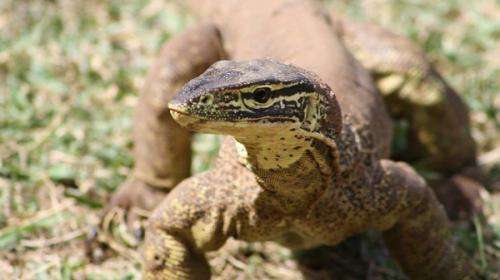"Frozen zoo" safeguards Kimberley reptile diversity

A team of researchers based at Newcastle University are working to create a Kimberley wildlife sperm bank.
Ecologist Simon Clulow says toxic cane toads in the Northern Territory have severely depleted the animal populations that ate them.
"We realised that toads were going to cross into Western Australia and in particular cross into the near-pristine Kimberley, and more than likely wreak havoc on the ecosystem there," he says.
"Even though those populations of various species might hang around in low numbers, essentially they're functionally extinct.
"It's too late for them, they've lost all that genetic diversity, all that future evolutionary potential."
The scientists intend to restore the species' evolutionary potential by artificially inseminating animals in the wild from a stock of preserved sperm.
"We're starting to develop ways to actually get sperm from them without needing to kill them," he says.
"The team has just collected a sperm sample from a yellow-spotted goanna in a zoo using electro-ejaculation."
He says they employed a technique commonly used on mammals and in medical procedures on men.
Under general anaesthetic they applied electric currents with a small electric probe to encourage tensing of the muscles.
This forced sperm out through the reptile's cloacal passage which they collected with a pipette.
"As far as I'm aware it's only the second example of electro-ejaculation successfully conducted on a reptile anywhere in the world," he says.
"Tests are now underway to work out how to freeze the sperm without killing it.
"We don't actually know anything at all about monitor lizard sperm."
He says he is aware of no successful attempt to cryo-preserve reptile sperm anywhere in the world.
The main challenge is ice crystalising within the sperm cells.
"We need to develop a protocol that involves adding cryo-protectants," he says.
"A lot of the cryo-protectants themselves can be toxic to cells so we need to do some experiments to see if they are toxic to these particular sperm.
"If so, [we must determine] what concentration can we use."
Mr Clulow says the resulting "frozen zoo" will help preserve species such as the northern quoll, which will disappear entirely from some areas, and goanna populations which he expects to shrink by 95 per cent or more.
"At least we can initially save or restore that otherwise lost genetic diversity," he says.
"The fact that we put some of these potentially important genes back into the population might help recovery as well."
Provided by Science Network WA


















